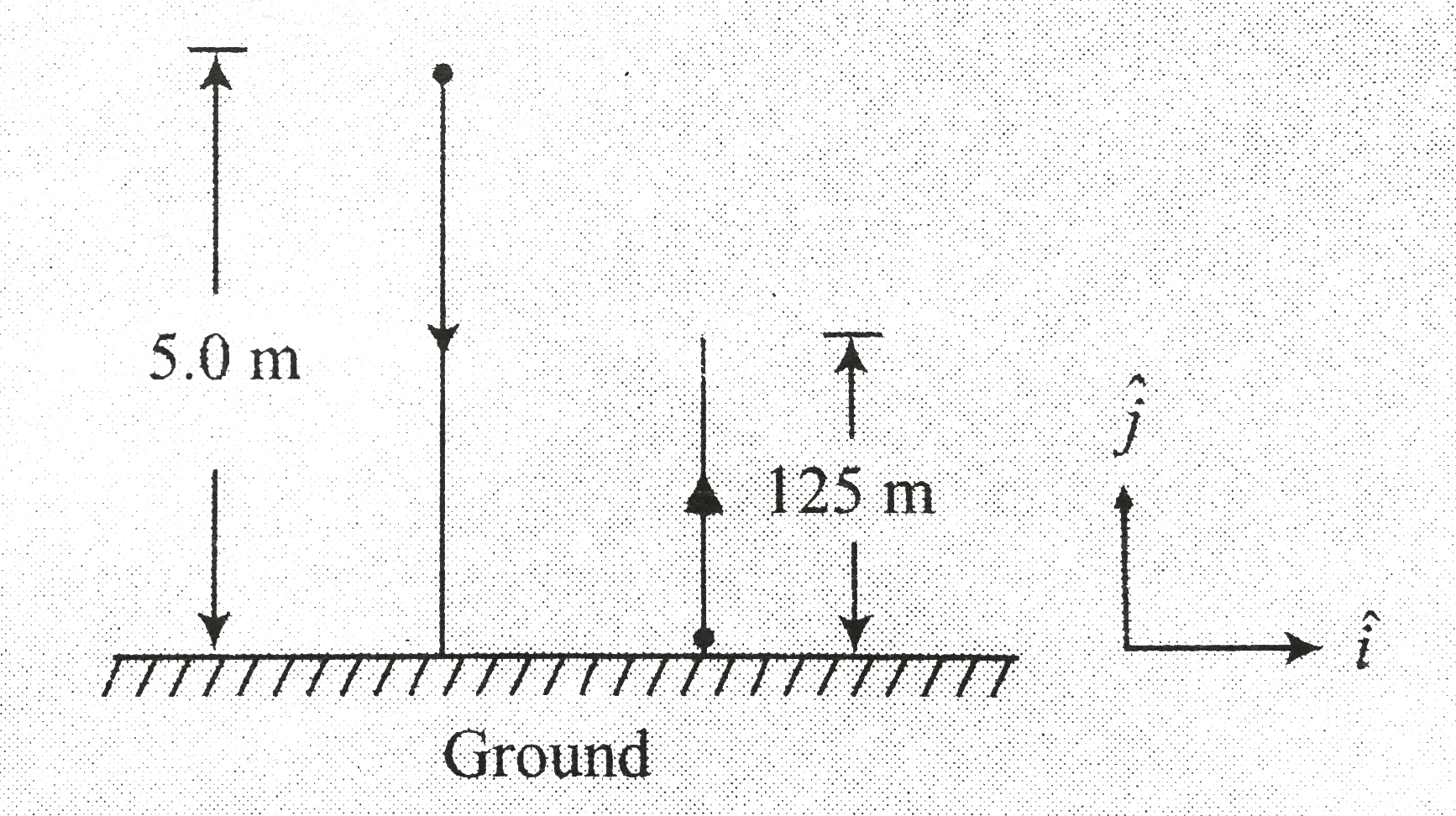A ball falls from 20 m height on floor and rebounds to 5 m. Time of contact is 0.02 s. Find acceleration during impact.
1200ms−2
1000ms−2
2000ms−2
1500ms−2
The correct Answer is:D
To solve the problem of finding the acceleration during the impact of a ball that falls from a height of 20 m and rebounds to a height of 5 m, we can follow these steps:
Step 1: Calculate the velocity just before impact
We can use the equation of motion to find the velocity of the ball just before it hits the ground. The equation is:
v2=u2+2gh
Where:
- v = final velocity just before impact
- u = initial velocity (0 m/s, since it starts from rest)
- g = acceleration due to gravity (approximately 10m/s2)
- h = height (20 m)
Substituting the values:
v2=0+2×10×20
v2=400
v=√400=20m/s
Step 2: Calculate the velocity just after impact
Next, we calculate the velocity of the ball just after it rebounds to a height of 5 m. Again, we use the equation of motion:
v2=u2−2gh
Where:
- v = final velocity (0 m/s at the highest point)
- u = initial velocity just after impact
- g = 10 m/s²
- h = 5 m
Rearranging gives:
0=u2−2×10×5
u2=100
u=√100=10m/s
Step 3: Calculate the change in momentum
The change in momentum (Δp) during the impact can be calculated as:
Δp=pfinal−pinitial
Where:
- pfinal=m×vfinal (after impact, going upwards)
- pinitial=m×vinitial (before impact, going downwards)
Substituting the values:
- vfinal=−10m/s (upward direction is negative)
- vinitial=20m/s
Thus:
Δp=m×(−10)−m×(20)
Δp=−10m−20m
Δp=−30m
Step 4: Calculate the force during impact
Using the impulse-momentum theorem, we know that:
F=ΔpΔt
Where:
- Δt=0.02s
Substituting the values:
F=−30m0.02
F=−1500mN
Step 5: Calculate the acceleration during impact
Using Newton's second law, F=ma:
−1500m=ma
Dividing both sides by m (assuming m≠0):
a=−1500m/s2
Final Answer
The acceleration during impact is −1500m/s2 (the negative sign indicates that the acceleration is in the upward direction).
---
We can use the equation of motion to find the velocity of the ball just before it hits the ground. The equation is:
- v = final velocity just before impact
- u = initial velocity (0 m/s, since it starts from rest)
- g = acceleration due to gravity (approximately 10m/s2)
- h = height (20 m)
v2=400
v=√400=20m/s
Next, we calculate the velocity of the ball just after it rebounds to a height of 5 m. Again, we use the equation of motion:
- v = final velocity (0 m/s at the highest point)
- u = initial velocity just after impact
- g = 10 m/s²
- h = 5 m
u2=100
u=√100=10m/s
The change in momentum (Δp) during the impact can be calculated as:
- pfinal=m×vfinal (after impact, going upwards)
- pinitial=m×vinitial (before impact, going downwards)
- vinitial=20m/s
Δp=−10m−20m
Δp=−30m
Using the impulse-momentum theorem, we know that:
- Δt=0.02s
F=−1500mN
Using Newton's second law, F=ma:
The acceleration during impact is −1500m/s2 (the negative sign indicates that the acceleration is in the upward direction).
Topper's Solved these Questions
Similar Questions
A ball of mass 1 kg is dropped from 20 m height on ground and it rebounds to height 5m. Find magnitude of change in momentum during its collision with the ground. (Take g=10m/s2)
View SolutionA rubber ball of mass 50 g falls from a height of 5m and rebounds to a height of 1.25 m. Find the impulse and the average force between the ball and the ground if the time for which they are in contact was 0.1s
 View Solution
View Solution
Knowledge Check
- Question 1 - Select One
A ball of mass 100 gram falls from 20 m height on floor and rebounds to 5m. Time of contact is 0.02s. Find average force acting on it during impact. (g = 10 m/s2)
A120 NB100 NC200 ND150 N - Question 2 - Select One
A ball falls from rest from a height h onto a floor, and rebounds to a height h/4. The coefficient of restitution between the ball and the floor is
A1√2B12C14D34 - Question 3 - Select One
A body falling from a height of 10m rebounds from the hard floor . It
A0.89B0.56C0.23D0.18
A ball is dropped from a height of 20 m in the floor and rebounds to 1.25 m after second collision, then coefficient of restitution e is
View SolutionA ball is dropped from a height of 20 m in the floor and rebounds to 1.25 m after second collision, then coefficient of restitution e is
View SolutionConsider a ball fells from a height of 2 m and rebounds to a height of 0.5 m. If the mass of the ball is 60 g, then find the impulse and the average force between the ball and the ground. The time for which the ball and the ground are in contact was 0.2 s. The initial velocity of the ball at P is zero. Let the final velocity of the ball at Q is v.
View SolutionA rubber ball falling from a height of 5m rebounds from hard floor to a height of 3.5m. The % loss of energy during the impact is
View SolutionA ball is dropped from a height h onto a floor and rebounds to a height h/6. The coefficient of restitution between the ball and the floor is
View Solution

